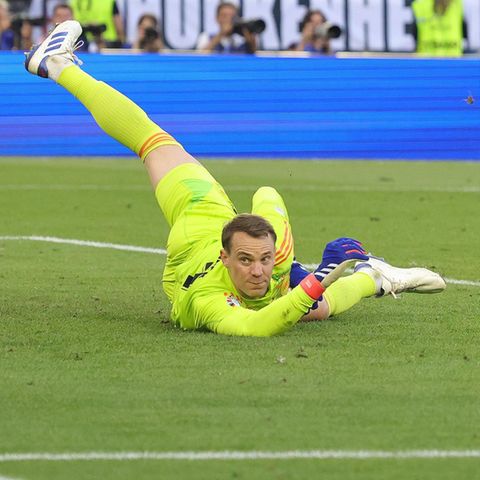Overview
Sustainable sports fashion: These brands carry fairly produced clothing
Functional clothing is made from synthetic fibers and moved with chemicals so that it becomes windproof or water -repellent. However, this has nothing to do with sustainable sports fashion.
For many athletes, breathable clothing is a must-have because it transports the sweat away from the body and ideally keeps it warm. On cold or rainy days, she protects your carrier from cooling. However, what many do not know: the more functions sport fashion has, the higher the likelihood that it has been transferred with chemicals and not produced in an environmentally friendly manner. But what exactly is sustainable clothing? And how do lay people recognize whether sports clothing was produced fairly?
Explanation: This distinguishes sustainable sports fashion
The most important thing first: The topic of sustainability is not about the materials from which sports fashion was produced – but under what circumstances. In other words, was the clothing made environmentally friendly and fair? In addition to the production method, three factors play an important role:
- The species -appropriate animal husbandry (when leather was processed)
- A fair payment and treatment of employees
- The use of raw materials from sustainable cultivation
In order to make ordinary functional clothing more resistant to wind and weather, it is usually processed with chemicals: Depending on the manufacturer, health -damaging substances (color or bleaching agents) are used, which can lead to skin irritation. Sustainable sports fashion, on the other hand, is produced in an environmentally friendly manner, regardless of whether it consists of artificial or natural fibers (such as silk or organic cotton). Merino wool, for example, is a popular material for sports clothing that warms the body when it is cold – and cools it when it is warm. Completely without chemical additives.
Eco seal: How to recognize sustainable sports fashion
There are different eco seals that differ from each other as follows:
| seal | background |
| Global Organic Textile Standard |
|
| Fair Wear Foundation |
|
| Bluesign product |
|
| Oeko-Tex Standard 100 |
|
| Oeko-Tex Made in Green |
|
Sustainable sports fashion: six brands in comparison
If you are interested in sports clothing that has been produced sustainably, these six brands are recommended:
1. Vaude
“Green Shape” is the label for sustainable sports fashion of the brand that is based in Tettnang on Lake Constance: it stands for sustainable materials, a resource -saving production and fair production. In addition, 80 percent of the manufacturer’s sports and outdoor clothing has a bluesign certificate. It is particularly exciting that many products consist of recycled PET bottles, old clothes or old fishing nets.
2. Löffler
Bicycle, running, outdoor and winter sports: also the company From Austria is a well -known manufacturer of functional sportswear. In terms of sustainability, the company says that a large part of the textiles would come from their own knitting. In addition, all yarns, fabrics, zippers and fabric finishes that have been bought should be awarded the “Oeko-Tex Standard 100” seal-and thus low in pollutants.
3. Patagonia
Sustainable sports and outdoor clothing is also available from . The manufacturer also relies on sustainable materials (e.g. hemp, organic cotton, recycled polyester or nylon) and chemical processing of tops and T-shirts, longsleeves and functional wash or leggings. In addition, many products are bluesign-certified-and the brand supports various environmental organizations.
4. Mammoth
This manufacturer was awarded the “Best Practice Award” of the Fair Wear Foundation in 2013, which is committed to better working conditions in the clothing and textile industry. The high -priced brand Primarily produces products for the mountain, climbing, outdoor and snow sports. The range now comprises more than 35,000 articles – including sustainable sports clothing for hiking and trekking. You can find tips on the right hiking outfit here.
5. Mandala
In contrast to the first three labels, the Bavarian company Mandala focuses on sustainable yoga clothing (such as leggings and sports bras), which-according to their own statements-is produced under fair working conditions. It consists of organic cotton, Tencel, Modal, Bio-Polyamide and Polyester, which has been recycled. Your own textile manufacturers are in Turkey and in Shanghai.
6. Trigema
Last but not least in this list: The Swabian label Trigema, whose sustainable sports fashion and leisure clothing for women, men and children is produced in Germany and also bears the “Oeko-Tex Standard 100” seal. A large part of the collection is made from synthetic fibers-except for the Trigema Change line: Bio-cotton is used here according to Trigema.
Sources: ,,
*This article contains so-called affiliate links to products in online shops. If a user clicks on it and buys something, the publisher receives a commission from the dealer, not from the manufacturer. Of course, where and when you buy a product is up to you.
Source: Stern
I am Pierce Boyd, a driven and ambitious professional working in the news industry. I have been writing for 24 Hours Worlds for over five years, specializing in sports section coverage. During my tenure at the publication, I have built an impressive portfolio of articles that has earned me a reputation as an experienced journalist and content creator.




